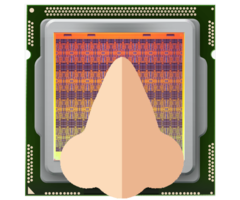When you cut them down to basics, processors are little more than flattened pieces of rock that we’ve taught how to think by pumping lightning through them. To that end, there’s virtually no limit to what creative minds can do with microchips. Some intrepid researchers at Intel recently made a processor that can “smell” various chemicals in the air.
The processors, which is a part of Intel’s Loihi program, is a neuromorphic chip that was designed to work with algorithms closely resembling the makeup of biological systems. This chip in particular works with code that strongly mimics a biological olfactory system, allowing it to “smell” 10 different scents, including potentially hazardous chemicals like methane and ammonia.
Perhaps most impressive is the fact that the chip learned these particular scents after a single exposure. Most other machine learning algorithms can take hundreds, if not thousands, of repetitions to accurately replicate the desired outcome. It should be noted that interpreting smell is fundamentally different from more traditional machine learning-oriented tasks like predicting weather patterns or making complex decisions from data.
This silicon mimicry of olfactory systems isn’t that large of a jump in reality. After all, our noses are, at a basic level, a system of receptors that send electrical impulses to our brain for interpretation. But the exploration of how that circuit works in a controlled environment like chip design could help future A.I. research.
What do you think of Intel’s new electronic nose? Let us know in the comments.














